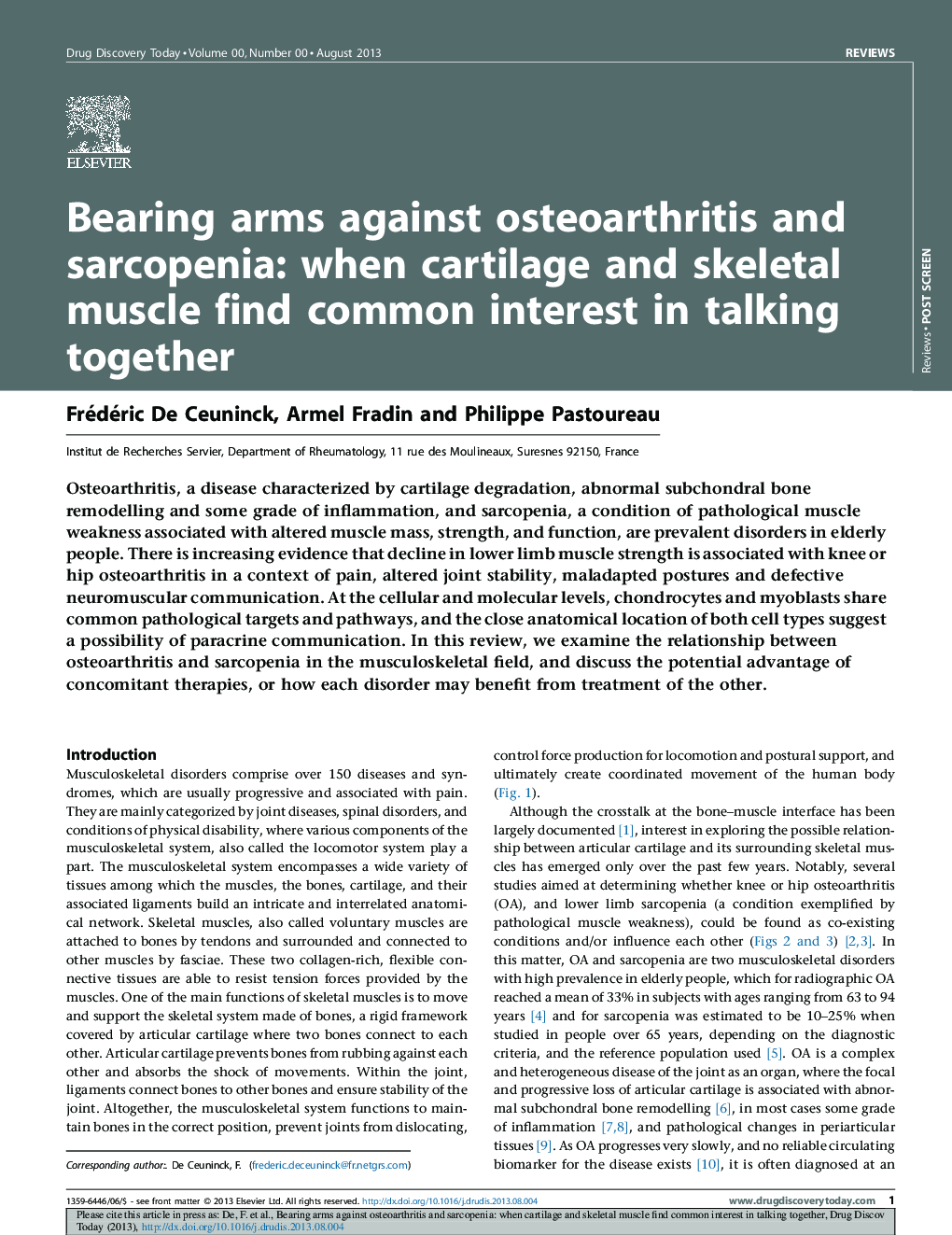| Article ID | Journal | Published Year | Pages | File Type |
|---|---|---|---|---|
| 10885988 | Drug Discovery Today | 2014 | 7 Pages |
Abstract
Osteoarthritis, a disease characterized by cartilage degradation, abnormal subchondral bone remodelling and some grade of inflammation, and sarcopenia, a condition of pathological muscle weakness associated with altered muscle mass, strength, and function, are prevalent disorders in elderly people. There is increasing evidence that decline in lower limb muscle strength is associated with knee or hip osteoarthritis in a context of pain, altered joint stability, maladapted postures and defective neuromuscular communication. At the cellular and molecular levels, chondrocytes and myoblasts share common pathological targets and pathways, and the close anatomical location of both cell types suggest a possibility of paracrine communication. In this review, we examine the relationship between osteoarthritis and sarcopenia in the musculoskeletal field, and discuss the potential advantage of concomitant therapies, or how each disorder may benefit from treatment of the other.
Related Topics
Life Sciences
Biochemistry, Genetics and Molecular Biology
Biotechnology
Authors
Frédéric De Ceuninck, Armel Fradin, Philippe Pastoureau,
